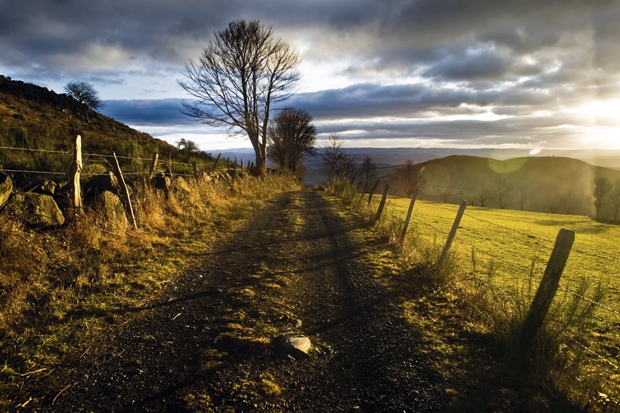The homicidal sheepdog that launched itself at me from behind a grassy hillock, had the look of a demented hearth rug but the fangs of a leopard. No self-respecting Border collie would have taken such a creature as a serious competitor in the herding business. But French sheep are different, at least those in the unfenced wilderness of the Aubrac plateau in the Massif Central are. More goat than sheep, they evidently regarded the ferocious dog as a minder that allowed them to graze full-time while it saw off wolves, bears and other predators, including a pink-faced randonneur trying to decide whether the map had put a volcano in the wrong place or he was indeed lost. I leapt backwards, apparently far enough to satisfy the rug that I was no longer a threat.
Those teeth were the most dispiriting spectacle of my walk through the Auvergne. The most inspiriting was a vast view of velvet-green volcanoes curving out from the base of the Puy de Sancy when I was about halfway to its 6,000 feet summit. But the real pleasure of wilderness walking goes deeper. Mostly it comes from the meditative stillness of moving through the countryside at no more than three miles an hour, a speed that empties the mind of all its clutter and is certainly the maximum intended for humanity by God. But its essence is distilled into the moment of bliss and terror when you realise you are totally lost. Everything then depends on how well heart, brain and foot work together. The exhilaration remains long after the fright has gone.
On this reckoning, the mountainous country of the Auvergne is a jewel beyond price. Although there are tracks through it — one is the well-trodden pilgrim route to Compostela, and the stunningly beautiful but frustratingly well-planned Cévennes National Park covers much of the area — it is vast and empty enough to meet the fundamental criterion of wilderness walking.
About an hour after I had left the sheepdog behind, I came to a stone farmhouse where another stood barking. The ancient farmer who came out had a face that wasn’t so much wrinkled by the Auvergne weather as corrugated. The sheep were his, and the dog I’d seen was the mother of this one. ‘Elle est du bon coeur,’ he said, explaining she was a Basque sheepdog, accustomed to guarding sheep by herself, and — this was delivered with satisfaction — would certainly have attacked had I approached closer. But he and the dogs were all that remained of the community in the area. As though farming were not tough enough, he said, the cretinous people in Paris had made it illegal to shoot the multiplying packs of wolves in the region. Even bears were being encouraged to breed. It is a useful attribute on the Aubrac plateau, for walkers and shepherds alike, to be of good heart.
To get there: Train from St Pancras to Clermont Ferrand. Train or bus from Clermont Ferrand to La Bourboule or Le Mont Dore. France offers a well-organised network of cross-country trails — Les Grandes Randonnées — from which it is easy get lost. http://about-france.com/tourism/long-distance-footpaths.htm. GR 65 is the pilgrim route to Santiago de Compostela. Several individual companies offer guided walks with luggage transported to each night’s destination.






Comments